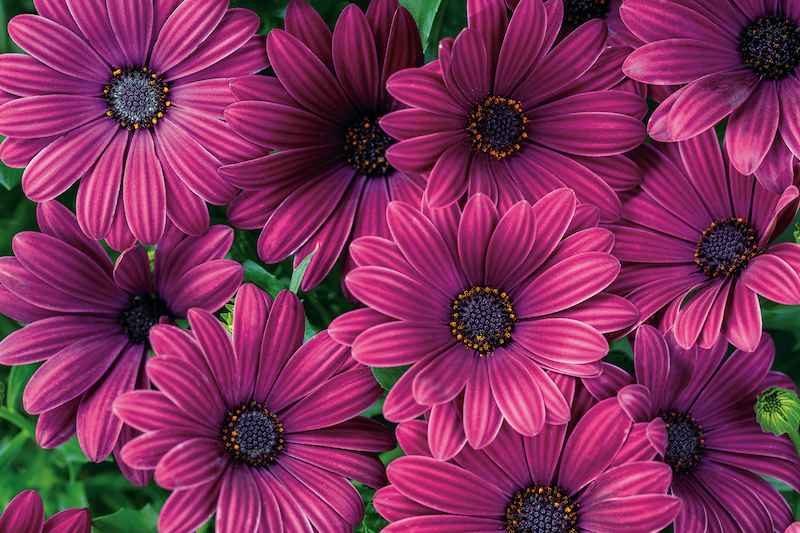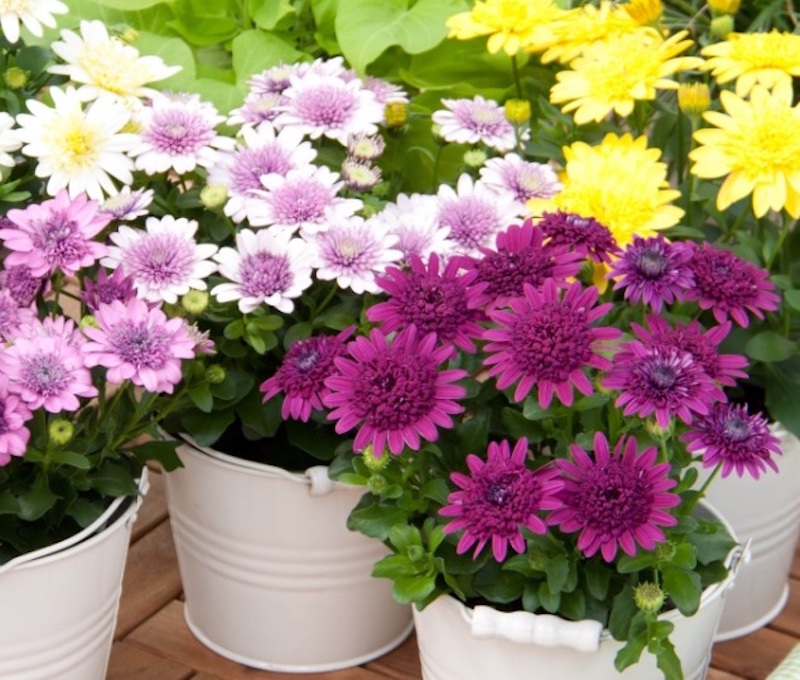African Daisy grows as a tender perennial only in the USDA hardiness zones of 9-11. The remaining growing zones can grow African Daisy as an annual, planting in containers or as a bedding plant well after the last frost. Overwintering tender perennials in the colder growing zones is not difficult but does involve preparing the plants to stay indoors for the coldest months.

Protecting African Daisy in Winter
Grow African Daisies in the brightest spot you have in the house. The fact that African Daisy is not a true annual makes it a good candidate for overwintering indoors in the coldest growing zones. The plants can be dug up and potted in 1 gallon-sized pots. Plants that are pot grown will also appreciate being divided and repotted into small containers for the winter.
Alternatively, container plants can remain semi-dormant in a frost-free but not cold location, such as a garage or basement. Unheated greenhouses with frost protection work well in zones 7-8.
African daisies that are grown as perennials in warm climates will need little protection. The winters in these growing zones are typically very mild. African Daisies should be brought into a sheltered location if there is an unusual freeze or cold snap. Covering ground-grown plants with a horticultural cloth, like Remay or Agribon, will protect tender perennials from frosts.
Cutting Back African Daisy For Winter
Pruning is necessary in the warmer zones, so that African Daisy stays compact and bushy. Over time, the plants will develop thick, woody stems similar to Lavender or Rosemary. Leave any current-season growth on African Daisy to give added protection from an unusual cold snap or frost. As new green shoots show in the spring, prune the dead growth off to just above the new shoots. African Daisies grown as annuals do not need any special pruning for winter. The plants can be pulled out and composted or put in the yard waste after the first frosts.
African Daisy Winter Care in Pots
African Daisies growing in pots can be left outdoors in gardening zones 9-11. Good drainage is essential, and watering may have to be monitored if you are growing in an area that is dry through the winter. No fertilizing is needed until new growth appears in late winter. In the colder regions, African Daisy needs to be brought indoors or to a frost-free spot to spend the months in partial dormancy.
Cut back any damaged or dying foliage and remove all spent flowers. African Daisy will appreciate regular watering if growing as a houseplant through the winter. It needs a sunny position away from dry heat sources like furnace vents or wood-burning stoves.

Watering African Daisy in Winter
Regular watering should be maintained if winter temperatures remain above 45 degrees F. African Daisies overwintered indoors need to be monitored for watering once a month. The pot can be allowed to dry out, but not enough for the soil to pull away from the sides of the pot. African Daisies grown as houseplants will need weekly monitoring for water. The top 2-3 inches of soil should dry out before watering. Overwatering a plant indoors is easy to do when the roots have slowed growth for the winter.

Growing African Daisy Indoors
African Daisies can easily be overwintered indoors in the colder growing zones. The whole plant can be treated as a houseplant, or softwood cuttings can be made late in the summer and stored indoors for transplanting in the late spring. Take cuttings from nonflowering stems and keep them in a bright, warm spot until new leaves emerge, indicating that the cuttings have rooted. Pot these new plants into individual containers and water regularly until planting out in the spring.
Steps To Care For African Daisy in Winter
African Daisy can be grown in every hardiness zone of the United States. Overwintering in each zone looks a little different. The coldest areas can grow plants indoors or take cuttings to grow over the winter. The middle zones can place semi-dormant plants in a frost-free spot.
Step 1 - Prune out any damaged or dying foliage and flower stems
Step 2 - Continue watering if growing African Daisy as a perennial in a warm climate
Step 3 - Take cuttings from nonflowering stems late in August, and grow them in a warm, bright spot over the winter
Step 4 - Monitor the dryness of pots stored in a frost-free location, watering once a month or less
 |
Author Robbin Small - Published 8-31-2022 |
